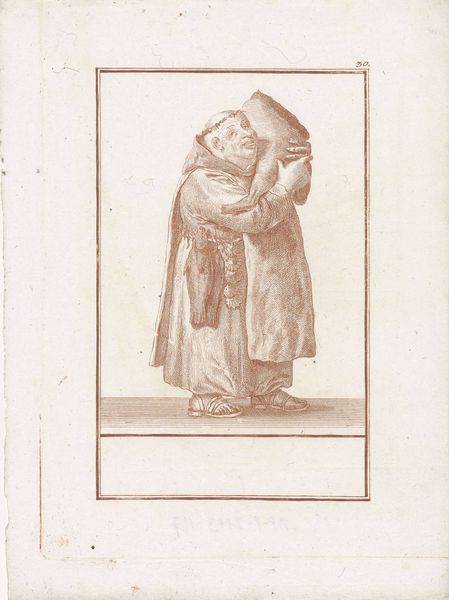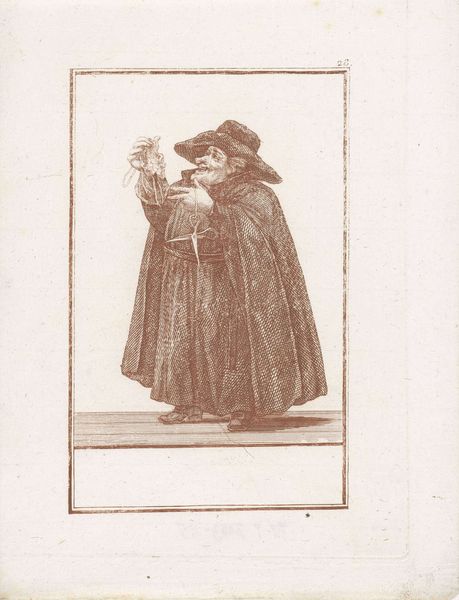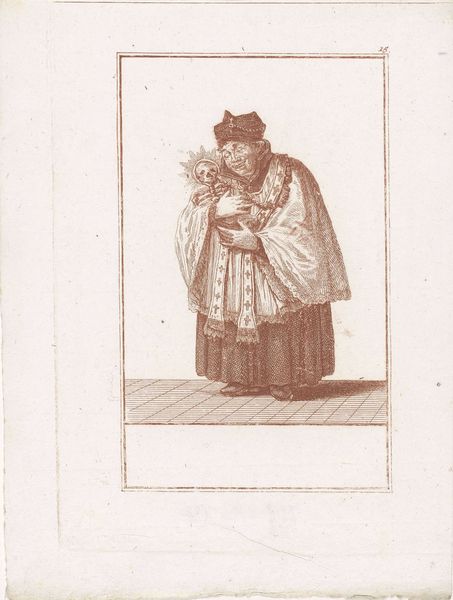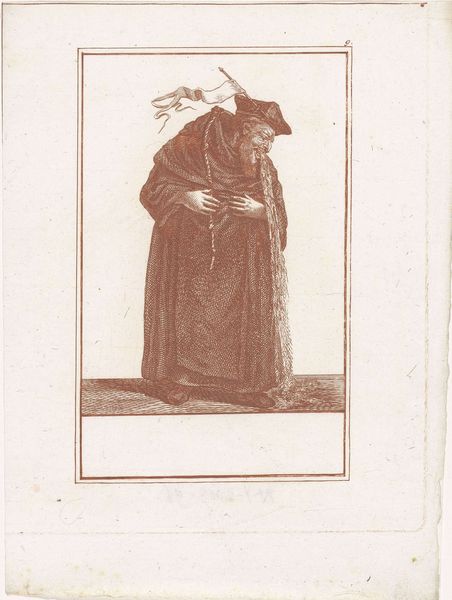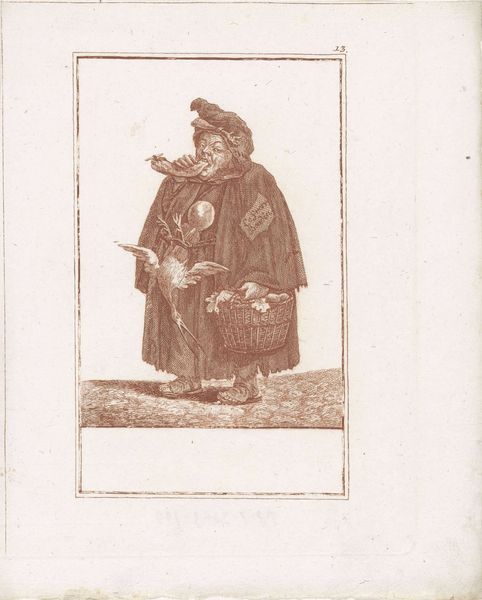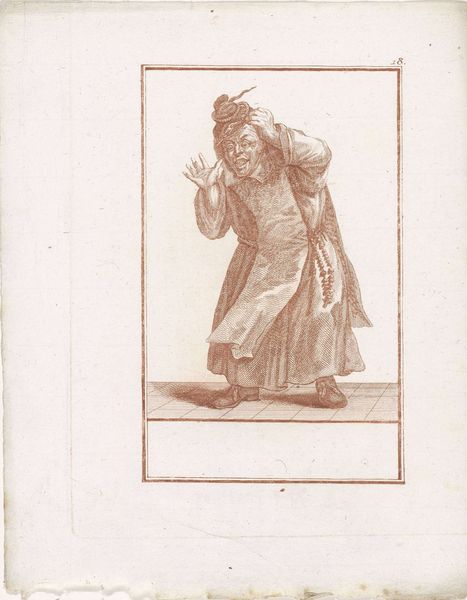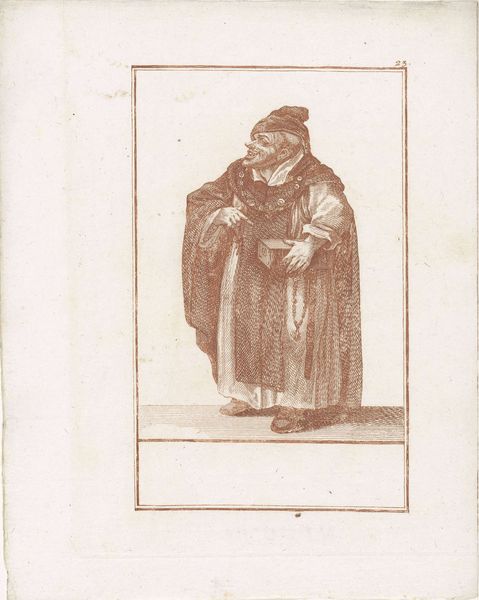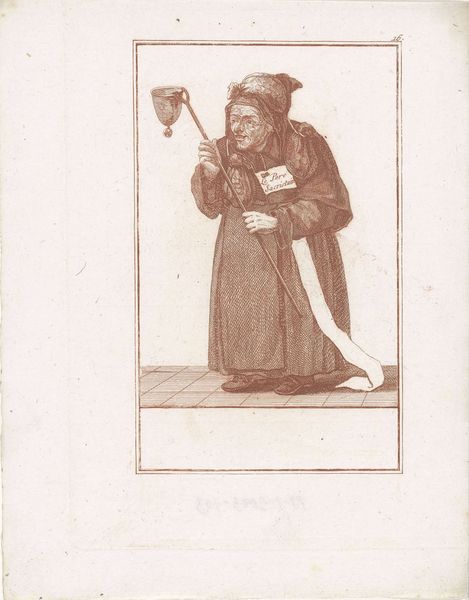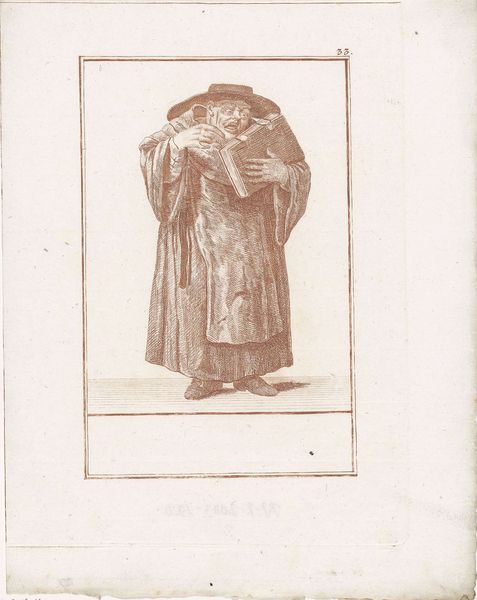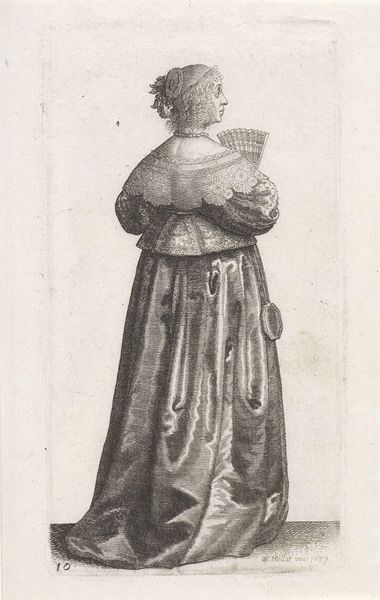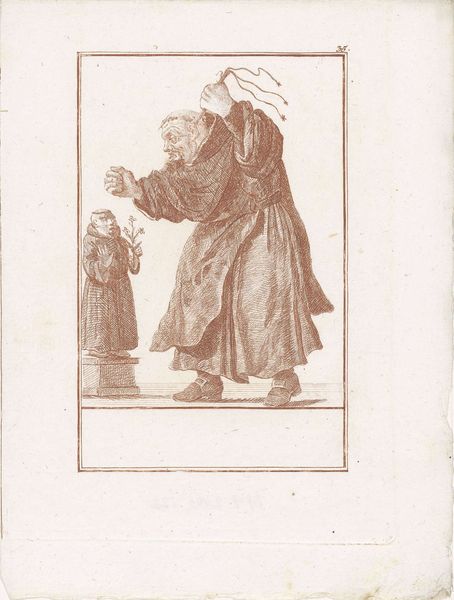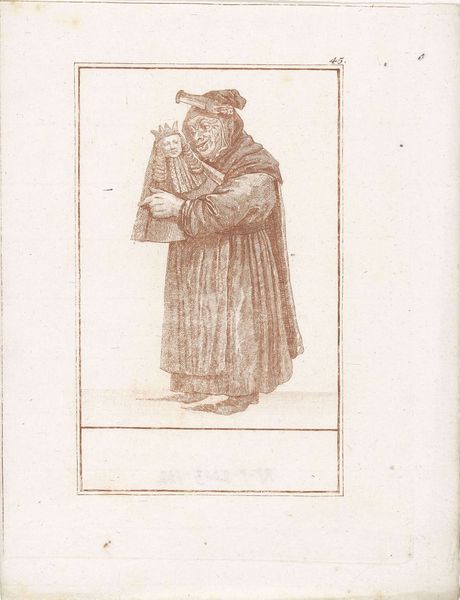
print, engraving
#
portrait
#
baroque
# print
#
old engraving style
#
genre-painting
#
engraving
Dimensions: height 235 mm, width 184 mm
Copyright: Rijks Museum: Open Domain
Curator: Here we have "Dikke Monnik," or "Fat Monk," an engraving dating back to 1724, created by Jacob Gole. It is currently held at the Rijksmuseum. The texture and hatching evident in the engraving brings this image to life. Editor: It’s a fascinating piece! The immediate feeling I get is of amusement mixed with slight unease. His grin is a little unsettling. Curator: That is quite a visceral reaction. Tell me, is that unease connected to any symbolic interpretations of this work? The monk figure might seem a little out of place today, but such characters do occupy a significant space in the cultural lexicon. Editor: Absolutely. Think about the historical context – the rise of the merchant class in the 18th century, challenges to religious authority. Depicting a monk, especially one who is, shall we say, generously proportioned, can be seen as satire against the established Church. The engraving also has implications about gender. Barefoot, a suggestion of humility in a patriarchal structure? Curator: Very interesting point, that barefoot is telling! What would you say that our awareness of patriarchal norms offers to our understanding of an engraving, such as "Dikke Monnik"? There could be parallels between the artist’s presentation of the friar as the barefoot man, and a historical association with the barefoot Carmelite or Discalced Carmelites, as their tradition requires them to practice constant penance, sacrifice and brotherly humility, the practice can include a going barefoot! Editor: Well, to situate him in an intersectional analysis we cannot ignore gender or religious order. It shows not only a challenge against religious orders, it mocks them. To depict a monk in such a manner raises question of how male leaders exercise and embody male religious virtue and control? How many are practicing, genuine religious humility? This engraving pushes back on it. Curator: Right, the bare feet definitely carry some symbolism, don't you agree? It prompts a deeper contemplation of religious ideals versus reality. There's a subversive commentary, isn't there, which remains potent even now, inviting us to reflect on figures of power, devotion, and even perceived hypocrisy in religious leaders or in powerful roles today. Editor: Precisely. I find the art historical approach deeply enriches contemporary readings of art. Understanding this can offer us an important challenge for understanding visual communication about social justice issues now. Curator: I completely agree. By unveiling those intricate historical threads, we deepen our own connection to the artwork. Editor: Yes. That intersection allows me to more personally engage and consider.
Comments
No comments
Be the first to comment and join the conversation on the ultimate creative platform.
